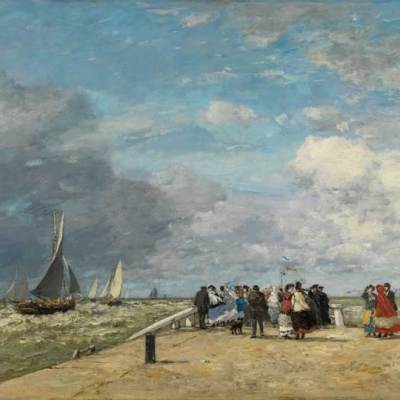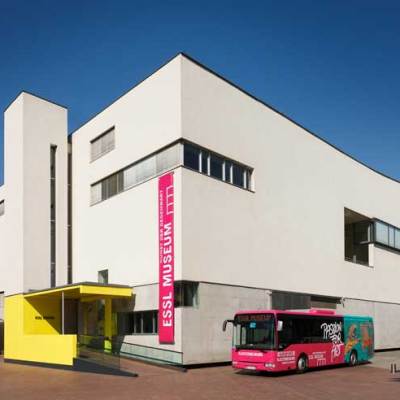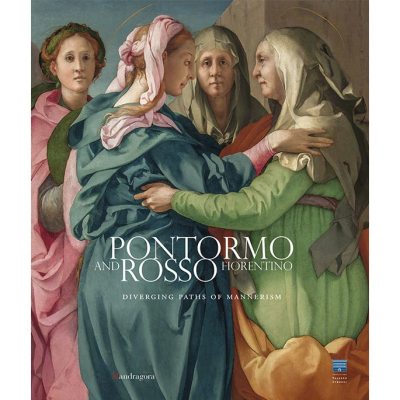In Apollo’s current March issue Emma Crichton-Miller previews Salon du Dessin in Paris, which opens tomorrow and runs until 31 March.
Over the last 23 years, the Salon du Dessin has established itself as the foremost international fair dedicated to drawings. What started in 1991 as a coterie of dealers staging a boutique drawings show in Paris, has evolved into an event that attracts the world’s leading specialists in works on paper. Hervé Aaron has chaired the board of organisers for the last 16 years and overseen the salon’s expansion: last December it was announced that he passes the torch this year to Louis de Bayser, who himself has been on the board since 2000.
On display at the Palais de la Bourse is everything from Old Masters through to contemporary work, and while French 19th- and 20th-century drawings are particularly strong, the reach is international. Since 2010, the Daniel & Florence Guerlain Fondation d’Art Contemporain has awarded a drawing prize, reflecting both the resurgent interest among contemporary artists for the medium, and providing a platform for younger names.
Such is the event’s pulling power that galleries throughout Paris save their drawings exhibitions for the last week of March. This year the fair’s theme is architectural drawing, and besides the two-day symposium exploring this, you can sign up for small group visits to museums – the Musée des Arts Décoratifs, Bibliothèque nationale de France, Musée Bourdelle, Maison de Victor Hugo and Musée Rodin among others – to view related displays. In addition, the board has invited Nancy’s Musée des Beaux-Arts to stage a special presentation at the salon of architectural drawings from its holdings. For this, the museum draws from Jacques Thuillier’s spectacular gift of 15,000 works on paper, and especially from a particular collection of early 19th-century architectural drawings gathered by Pierre-Joseph Garrez (1802–52). Garrez won the Prix de Rome for Architecture in 1830, and during his studies in Italy collected the drawings of many friends and fellow architects, including Victor Baltard, Eugène-Emmanuel Viollet-le-Duc and Hippolyte Flandrin.
But while the supporting programme is rich, the fair’s focus is on the dealers. Among the Old Master specialists, Didier Aaron et Cie is offering a delicate and leafy view of an Italian park (c. 1775–80; bistre wash over black chalk) by Fragonard. Gabriel Terrades, meanwhile, shows an unusual sheet of red chalk studies by Piranesi, not of architecture, but of silhouettes, in pen and brown ink, while Galerie d’Art Paul Prouté offers a red chalk drawing of a boy gazing upwards by the Italian baroque painter, Elisabetta Sirani. Other highlights include another Fragonard portrait, this time in red and black chalk and presented by Bellinger|Colnaghi.
New York dealer David Tunick, participating for the first time, presents A Seated Man Playing a Sackbut (1637), a closely observed black chalk drawing by Dutch artist Cornelis Saftleven, as well as Studies of a Woman with a draped head in an attitude of supplication, a fine sheet of chalk studies (c. 1680), by Nicolas de Plattemontagne. Nathalie Motte Masselink, another newcomer, brings a Guercino ink study of an executioner, whose provenance can be traced back to the artist’s studio.
Surely one of the fair’s highlights, however, is a charming red chalk portrait of a young girl of around 1765 by Greuze, once owned by the great 19th-century collector Laurent Laperlier and offered by Didier Aaron. A finished Trinquesse portrait of a seated woman, executed in red chalk, is offered by W.M. Brady of New York. Stephen Ongpin has a delightful highly finished watercolour drawing on vellum of an Indian elephant by the early 19th-century French artist Nicolas Huet the Younger, in excellent condition. According to Ongpin, the elephant was one of a pair originally from Ceylon, sent to William V, Prince of Orange’s menagerie at Het Loo, but when French troops occupied the Netherlands in 1795, animals in the Dutch menageries were treated as war trophies. This one was presented to the national menagerie at the Jardin des Plantes.
A major strength of the fair is drawings from the late 19th through to the 20th century. Among the highlights are masterpieces by Joan Miró (a 1949 watercolour courtesy of Galería Guillermo de Osma, Madrid, and a curious composition in pencil, pastel and lead paint with Jacques de la Béraudière, Geneva). Brussels-based dealer Patrick Derom is mounting a special exhibition of work by Arshile Gorky, while the Parisian Galerie Antoine Laurentin exhibits a vivid gouache sketch by Dubuffet, Arabe devant l’oasis, executed in 1948 on one of several trips the artist made to Algeria. Galerie des Modernes, Paris, has a late pencil drawing (1983) by Andy Warhol of the Spanish/Italian pop star and actor, Miguel Bosé.
Of the German dealers, Hamburg-based Martin Moeller & Cie brings another pencil drawing, this time a self-portrait by Otto Dix, while Le Claire Kunst, also from Hamburg, has a delicate and charged portrait in black chalk by Balthus of Setsuko Ideta, executed in 1963, the year after they met (they married in 1967). Jill Newhouse from New York shows some fine sheets by Bonnard and Giacometti and an accomplished academic torso by Seurat (1877). Another Giacometti, an ink portrait of Émile Buri of 1918, can be found with Swiss dealer Galerie Ditesheim & Maffei Fine Art.
The best of the contemporary work on display comes courtesy of Galerie de France, Paris, which presents Luc Tuymans’ pencil and gouache The Gate of 1986, while Paris-based Galerie Berès brings the virtuoso and hyperreal Nature morte aux gobelets by Josep Santilari, a dazzlingly executed still life in pencil dated 2013.
Salon du Dessin runs at the Palais de la Bourse, Paris from 26–31 March 2014.







